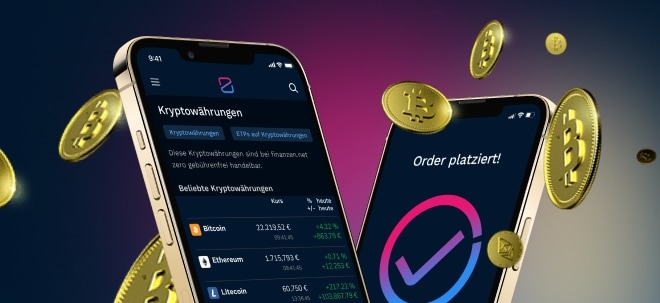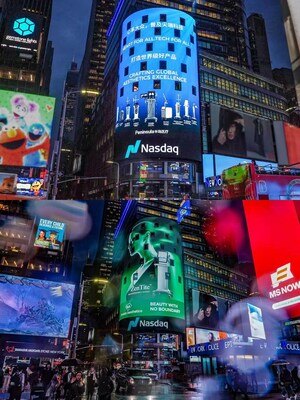From a Times Square Screen to the Treatment Chair: How "Engineered Comfort" Is Reframing Aesthetic Technology
NEW YORK, Nov. 27, 2025 /PRNewswire/ -- Do aesthetic treatments really have to hurt to work, or can we make them comfortable and still effective?
That question sits behind the work of Peninsula Medical Group and its U.S. partner, Boston Aesthetics, which are trying to bring "comfort-first" aesthetic technologies out of research centers and into everyday clinics, med spas, and the communities they serve.
On a late November evening in New York, the Nasdaq tower in Times Square lit up with something unique: not a stock ticker, but a rotating gallery of dermatologists and laser specialists. For most passersby, it was a brief, eye-catching moment in the swirl of lights. For Peninsula Medical Group (PMG) the Shenzhen-based Aesthetic Medtech company behind the display, it was a way to pose a quieter question that many patients already ask:
Can modern aesthetic treatments feel safer, gentler, and more human—without giving up clinical results?
Many of the physicians on the Nasdaq screen were dermatologists from leading hospitals and medical aesthetic centers in China. They are not just users of Peninsula's devices, but long-term collaborators who have helped shape each generation of technology—bringing high-volume, real-world cases and patient concerns from their clinics, and working side by side with engineers to turn those needs into new designs.
Together with its U.S. partner, Boston Aesthetics, and more than twenty dermatologists from major hospitals and medical aesthetic clinics, Peninsula Medical Group used a brief 150-second slot on the Nasdaq tower in Times Square to spotlight the core of its long-term vision: fourteen years of focused ultrasound and radiofrequency innovation co-developed with frontline dermatologists and aesthetic physicians. Headquartered in Shenzhen, the medical aesthetics technology group chose to feature two flagship systems shaped by that collaboration—its latest-generation Peninsula Microultra micro-focused ultrasound platform and the ZenTite RF microneedling system, both recently approved as Class III medical devices by China's National Medical Products Administration (NMPA), the country's highest-risk, most strictly reviewed device category, with ZenTite also cleared by the U.S. Food and Drug Administration (FDA) for the U.S. market.
Medical–Engineering Synergy: Designed Around Real Patients
Inside Peninsula, new ideas rarely start with a marketing brief. They start in exam rooms and operating rooms—when physicians ask, "Can this be safer?" "Can this hurt less?" "Can my patients recover faster and still see meaningful results?"
This is what Peninsula calls medical–engineering synergy. Clinicians who work with the company bring in real cases and real constraints: patients with sensitive skin, demanding work schedules, low tolerance for pain, or complex treatment histories. Engineers sit with those stories and translate them into design choices—how energy is delivered, how handpieces are shaped, how treatment protocols are written, tested, and refined. The goal is not simply to push more power into the skin, but to find a balance of efficacy, comfort, and predictability that works in everyday practice.
"As doctors, we see patients who are curious about new treatments but worried about what they will feel like and how long they'll be out of their normal routine," says one dermatologist who has worked with Peninsula devices in both hospital and private practice settings. "When we work with engineers, we're not just asking for stronger machines. We're asking for systems that respect the skin, respect recovery time, and fit the realities of our patients' lives. Over time, that collaboration has allowed us to bring more thoughtful options into the clinic."
That collaboration shows up not only in images on a screen but also in a growing body of clinical work. In recent years, physicians using Peninsula devices have published more than one hundred studies and case series in peer-reviewed journals, adding data on safety, treatment parameters, and patient satisfaction to the broader literature on energy-based devices. Many of these authors are Chinese dermatologists from public hospitals and private medical aesthetic centers, whose experience with high patient volumes and diverse skin types has helped generate a steady stream of real-world insights. Earlier this year, several of these clinicians presented their findings at the annual meeting of the American Society for Laser Medicine and Surgery (ASLMS), joining colleagues from the U.S., Europe, and beyond to discuss how to choose settings for different skin types, how to manage discomfort, and how to balance visible results with reasonable downtime.
ZenTite : Rethinking an Old Trade-Off: Results vs. Comfort
For many patients, RF microneedling has meant a quiet trade-off: strong results in exchange for a very tough treatment. ZenTite was designed around a different rule—comfort as a hard engineering constraint. Its STEP-inspired energy delivery fires small groups of needles in sequence rather than all at once, multi-layer treatment reaches several skin depths in a single insertion, and soft vacuum control gently lifts and stabilizes the skin. Together, these choices help spread heat more evenly, reduce sharp "hot spots," and make each pass smoother and more tolerable while preserving tightening outcomes.
That engineering is now proving itself in the hands of experienced experts in medical aesthetics. In New York, one dermatologist known for her work in both cosmetic formulation and laser surgery has demonstrated multi-layer treatments with ZenTite and reported that she and her patients particularly appreciate the added comfort and control from the vacuum-assisted tips. A past president of a major laser and dermatologic surgery society has described ZenTite as his preferred RF microneedling platform, noting that multi-layer energy delivery can make treatments significantly faster while maintaining comfort, including in delicate neck areas.
On a leading laser and aesthetics podcast, a cosmetic laser expert has highlighted the same pillars—comfort, multi-depth efficiency, speed, and vacuum-assisted precision—and placed ZenTite within the broader regenerative aesthetic landscape.
Taken together, these experiences point to a simple conclusion: ZenTite no longer forces clinics and patients to choose between results and experience, which in turn makes it easier for practices to increase utilization, rebooking rates, and word-of-mouth referrals without overloading staff or stretching appointment times.
For high-standard multi-location MedSpa platforms, the central question is not only whether a device works in a single flagship practice, but whether "engineered comfort" treatments like ZenTite can be rolled out across multiple locations with predictable training, throughput, and patient satisfaction.
Peninsula Microultra: A Gentler Generation of Ultrasound Treatment in China
While ZenTite represents Boston Aesthetics' first U.S. launch, Peninsula has also been advancing ultrasound lifting technology. In China, the latest-generation Peninsula Microultra micro-focused ultrasound system has recently obtained Class III approval, reflecting a shift in focus from "maximum intensity" to controlled, comfortable lifting that fits into everyday life.
Compared with earlier ultrasound platforms, Microultra is engineered to distribute energy more evenly in a larger focal region and to soften the sharp, deep discomfort that many patients traditionally associate with ultrasound lift procedures. Chinese clinicians report that patients are more willing to start and complete treatment plans when visible lifting can be achieved with shorter, more manageable downtime and a treatment experience they describe as "tightening" rather than "enduring pain."
In fact, the latest-generation Peninsula Microultra micro-focused ultrasound system is already undergoing multiple studies in the United States and is set to launch in the near future. Boston Aesthetics Medical Affairs Manager Dr. Ao Li added, "Moving forward, we will continue introducing cutting-edge technology to the global market, leveraging Peninsula's engineering expertise and design capabilities. "
Boston Aesthetics: Translating Between Worlds
At Boston Aesthetics, U.S. business development is spearheaded by Shawn Cheng-Shiao Ho, who bridges the gap between engineering innovation and commercial strategy—helping ensure that complex technology becomes something ordinary clinics can adopt, afford, and explain to patients in plain language.
Trained as a biomedical engineer at National Taiwan University, with therapeutic ultrasound research experience at the University of Washington's Center for Industrial and Medical Ultrasound (CIMU) and dual MBAs from UCLA and the National University of Singapore (NUS), Ho brings an end-to-end view of how devices move from lab to clinic to sustainable business model. Under his leadership, Boston Aesthetics is adapting Peninsula's long-tested model of high-utilization devices and high-repurchase consumables for U.S. MedSpas, dermatology practices, and multi-location aesthetic groups. The team focuses on Engineered Comfort and its STEP Change framework—Smooth, Targeted, Effortless, Personalized—optimizing energy delivery to minimize pain and downtime without sacrificing efficacy, and framing performance in clear economic terms so that strong engineering translates into better patient experience, higher utilization, and attractive returns in real-world clinics.
Long-Termism in a Short-Term World
In an industry sometimes driven by dramatic before-and-after photos and quarterly product cycles, Peninsula and Boston Aesthetics are betting on something slower: long-term partnerships with clinicians and continuous, feedback-driven improvement. That means staying close to everyday practice—listening to how treatments feel in real rooms, sitting with physicians and staff to turn that experience into updated protocols, parameters, and training—and building business models around recurring consumables, education, and support, so providers are encouraged to use devices consistently and correctly, not let them gather dust. The goal is not just to sell a box, but to be a solutions partner that helps clinics deliver the right treatment to the right patient in a way that fits real life.
"True medical aesthetic technology should stand on serious academic ground and still fit into ordinary people's daily lives," Ho says. "If a device looks impressive on a conference slide but doesn't help clinicians offer comfortable, appropriate treatments that patients can actually accept, we haven't really done our job."
![]() View original content to download multimedia:https://www.prnewswire.com/news-releases/from-a-times-square-screen-to-the-treatment-chair-how-engineered-comfort-is-reframing-aesthetic-technology-302627430.html
View original content to download multimedia:https://www.prnewswire.com/news-releases/from-a-times-square-screen-to-the-treatment-chair-how-engineered-comfort-is-reframing-aesthetic-technology-302627430.html
SOURCE Peninsula Medical Group


